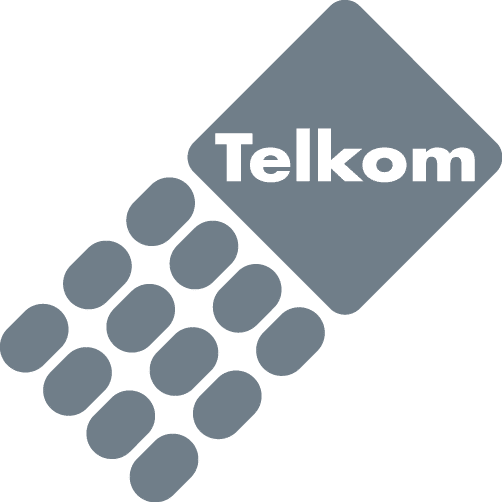In today’s digital media climate, people are fed information at every turn. From relentless social media feeds to round-the-clock advertising, brands battle one another head-to-head for attention, and only the ones that communicate fast win. That’s where visuals can be helpful. Whether it’s an image, infographic, video, or animation, visuals have emerged as the soul of contemporary content marketing because they convey messages more quickly, forcefully, and memorably than words alone.
It is a fact that the human brain interprets visuals 60,000 times faster than text. In the age of skimming over reading, visuals fill the chasm between short attention span and meaningful exchange. They not only help people comprehend information, but also make that information more engaging, emotionally resonant and shareable.
From social media campaigns to blog layouts and virtually every platform, web performance is now influenced by visual content marketing. It commands attention, promotes understanding, and forges stronger emotional ties, all of which are invaluable attributes in an age of scrolling and swiping.
The Science Behind Visual Content: How the Brain Processes Images Faster Than Words
It’s not just about looking good, either; pictures are scientifically proven to grab our attention and enhance our memory. Humans are visual creatures by nature. Nearly 90 per cent of information that comes to the brain is visual, which means people tend to remember up to 80% of what they see and just 20% of what they read.
This mental preference claims visual content marketing as indispensable to the marketing world. In a digital world where users have seconds to decide whether to stay or scroll, visuals allow brands to communicate their message almost instantaneously. An impactful image, infographic or video thumbnail can convey intricate concepts with a touch, inspiring users to dig deeper inside.
And it’s a psych thing. Graphics stimulate the visual and emotional centres of the brain, enhancing comprehension and emotion. Colours, for example, can affect mood and behaviour; blue signals trust, red signals urgency, and green signals balance. Visual design, when used well strategically to strengthen brand perception, is a stimulus for subconscious associations.
Moreover, visuals improve retention. A message with an image is much more likely to be remembered than a purely text-based sentence. That’s why companies invest in logos, recurring imagery and brand colours, to make sure you’re instantly recognised and trusted.
In other words, visual content is more than mere decoration; it’s a cognitive shortcut. It empowers brands to babble, appeal to emotion, and remain memorable in a fast-scrolling world, which is probably why visual storytelling has become so fundamental in digital marketing today.
Visual Content and Engagement: Why People Click, Share, and Remember
In the world of content marketing today, engagement is the name of the game, and no kind of content drives it better than visuals. Social networks such as Instagram, TikTok, YouTube and Pinterest exist for a reason: people enjoy looking at images. According to many marketing research posts that include pictures or videos, they get up to 650% higher engagement than those without.
Why does this happen? Visuals evoke immediate emotional responses. A great picture, graphic or video tells a story more effectively than words alone and will draw people in to comment and share. Visuals make that human story easy to share because we are social storytellers. Whether it’s a quote in an image, an infographic, or a video about something that really makes you feel something, how great was that content marketing? It triggers emotions, big secret here: Emotions are what make people tick and get social.
Video, in particular, reigns supreme when it comes to engagement metrics. Videos are prioritised because they keep users watching longer, ultimately ensuring higher algorithmic ranking. Short-form videos like TikToks or Instagram Reels are designed perfectly for today’s audience, fast, fun and emotionally charged.
Visuals add clarity and credibility, too. For instance, infographics help boil down complicated data into something you won’t choke on and can trust. In a world of information overload, people have little attention span for all but the most pithy and direct visualisations to help them learn and act more quickly.
Visual Storytelling and Brand Identity: Building Emotional Connection and Trust
Each brand has a story to tell, but not all stories are communicated well. And that’s where visual storytelling is compelling. In content marketing, visuals are more than communication tools; they’re the language of emotion. They influence how people think about your brand and how attached they feel to it.
Visual storytelling is more than just slapping up pretty pictures. It’s the surety, the symbolism, the emotion. From colour scheme to imagery, every design element reflects your brand identity. For instance, there are minimal styles which suggest elegance and confidence, as well as playful, bright styles that communicate creativity and light-heartedness.
When it’s done well, visual storytelling engenders trust. Nowadays, people don’t buy the ad; they buy the truth. Authentic photos, user-generated images and behind-the-scenes shots create the faces of brands, revealing transparency and personality.
Consistency is also crucial. When the logos, colours and style are repeated enough times, they will become something your audience can instantly identify as yours. This visual continuity creates familiarity, which eventually leads to priori trust. There’s a reason corporations as big as Apple, Coca-Cola, or Nike have powerful visual identities — their designs can move feelings before words are even read.
Also, visuals can clarify the lengthy and intricate brand names. One picture can depict an entire mission statement and deliver it to people all over the world. In a global marketplace, many barriers have developed due to language differences. Visual content is now automatically the spokesperson for them. When brands pair visuals with real stories, they create far more than marketing; they form a bond. And in a digital environment where emotional engagement begets loyalty, that kind of connection is invaluable.
Practical Strategies for Using Visual Content in Modern Content Marketing
Knowing the importance of visual content is one thing – putting it to great use is a whole other beast. If you want to make the most of visual content marketing, that’s a strategy that makes your creativity work for your business.
- Diversify Your Visual Formats: Don’t depend on just one kind of visual. Combine pictures, infographics, GIFs, videos, charts and interactive aspects to continue making your content dynamic. Each method is for a different purpose: infographics educate, videos engage, and photos humanise your business.
- Optimise for Each Platform: Visual culture is different on every social platform. Horizontal videos are effective on YouTube, vertical content rules on TikTok, and carousels resonate on LinkedIn and Instagram. Customise your visuals based on how the audience interacts with them on a particular platform and according to its specifications for reach and participation.
- Focus on Quality and Consistency: Good quality images show professionalism and trustworthiness. Invest in sound design and stick with the consistent branding – colour, typography and tone of voice. Its presence strengthens identity and creates awareness.
- Integrate Data and Emotion: Combine data with storytelling to balance logic and emotion. For example, use infographics to turn statistics into comprehensible visuals or combine emotional images with actionable facts. The former is more of an intellectual, left-brain appeal; the latter is designed for the emotional right brain.
- Leverage User-Generated and Interactive Content: Encourage your audience to participate. Re-share user-generated images, run a contest or produce a poll or quiz. Interactive content marketing is community building, and it’ll get you some good organic reach.
- Measure and Refine: Leverage analytics to determine which visuals generate the most engagement. Track metrics such as click-through rate, shares and completion rate of videos. Reposition your visual content based on what engages your audience the most.
Done right, visual content turns your marketing from something you passively consume into an engaging experience that creates awareness, builds trust and loyalty.
Conclusion
Gone are the days when visuals were nice to have; now they’re a must. In a world dominated by the Internet and information overload, visuals are what make your message cut through the clutter and stick in our often-scattered minds. They serve as the artery between brand and audience, transforming a concept into an experience or data into emotion. These days, content marketing is much more cutthroat and visual, serving to accomplish what text alone can’t: grasp attention spans, incite curiosity, and evoke emotion in seconds.
Videos, infographics, and fantastic imagery transcend boundaries, cultures, and platforms. Not only do visuals increase engagement, but they also enforce brand identity. They establish your brand and protect its reputation, imprinting in customers’ minds the idea of who you are. When you share, visually relationships are built, not just clicks.
GET IN TOUCH WITH THE DIGITAL SCHOOL OF MARKETING
Do you want to become a content marketer? If you do, then you need to do our Content Marketing Course at the Digital School of Marketing. Follow this link to find out more.
Frequently Asked Questions
Visual media categorises all imagery, video, infographics, animation and design that conveys a message visually. When it comes to content marketing, images can be very effective at distilling complicated concepts, grabbing attention and increasing engagement. Images make information more easily understandable compared to text-heavy content, and people are far more likely to remember pictures than words.
Visual media is crucial in contemporary content marketing because visuals are processed much faster by people than text, allowing for quick and succinct communication. In today’s attention-based landscape, audiences are scrolling quickly, and visuals can help stop the scroll and communicate juicy messages immediately. They’re emotional, too, giving a boost to branding connectivity and recall.
The best types of visual media will vary depending on your aims and the kind of audience you’re targeting. Still, proven visual media formats include infographics, short-form video, branded images or graphics, data visualisations and animations. Infographics distil data and enhance shareability, while videos, particularly Reels, Shorts and TikToks, encourage emotional engagement and further retention.
Visual is creating relatable content and fostering an organic connection between people through its Informative, Emotional, & Memorable Information. They engage faster and react more when they see content instead of reading it. In content marketing, form graphics boost platform engagement (likes, shares and comments on social) and lower their bounce rates. Videos and infographics are powerful; people pay attention to them longer and engage with them more. A post is more likely to be shared if it has a compelling visual, which allows your content to be seen by more viewers organically.
Making good visual-style content demands three key points: clarity, consistency, and creativity. It begins with strong brand guidelines, the colours, fonts and imagery that create recognition. Just concentrate on great visuals that support your message and avoid messy designs. Properly format each version for its platform, e.g., vertical videos on mobile and clean thumbnails on YouTube. Story is king, so everything you create should either teach, awaken or resonate. If there is a prominent CTA, use it.
.
Businesses might add visuals to their content by incorporating them into an overall marketing plan instead of treating them as an afterthought. Begin by finding the right topics that are perfect for visual material. Explainer videos, infographics, and product images all fall under this category. Employ imagery across sites, social media and email campaigns to help cultivate a strong brand identity. Promote user-generated images to create authenticity and engagement. Invest in design tools like Canva or Adobe Express and keep an eye on analytics to see what works best.
Blog Categories
You might also like
- Will Content Marketing Generate Leads for your Business?
- Why You Should Use a Content Calendar For Your Digital Marketing
- Why you should search for trending hashtags before posting content
- Why You Should Master Digital Copywriting To Enhance Your Content
- Why you should leave comments on blogs
- Why You Should Search For Trending Hashtags Before Publishing





















